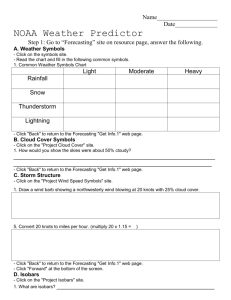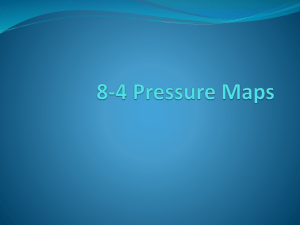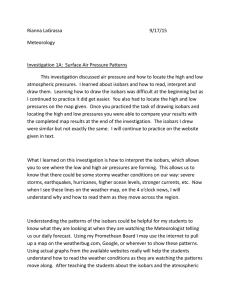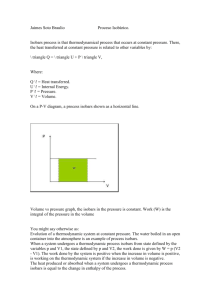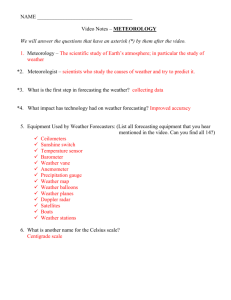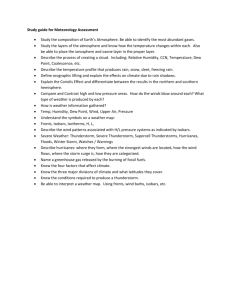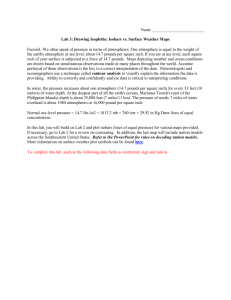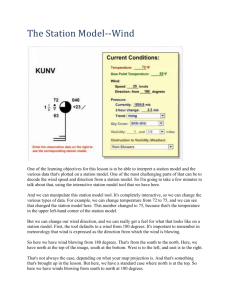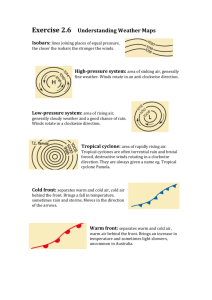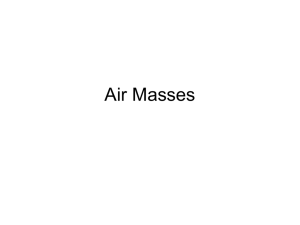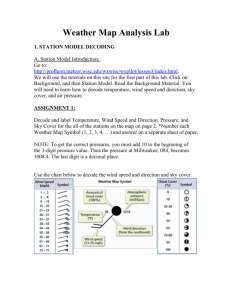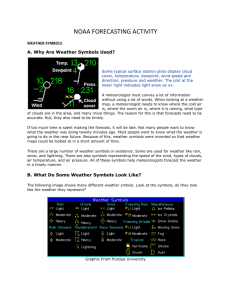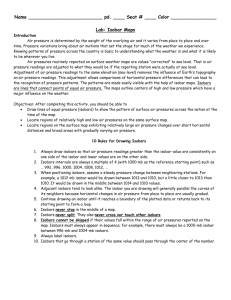NOAA Weather Forecasting WebQuest http://www.oar.noaa.gov/k12
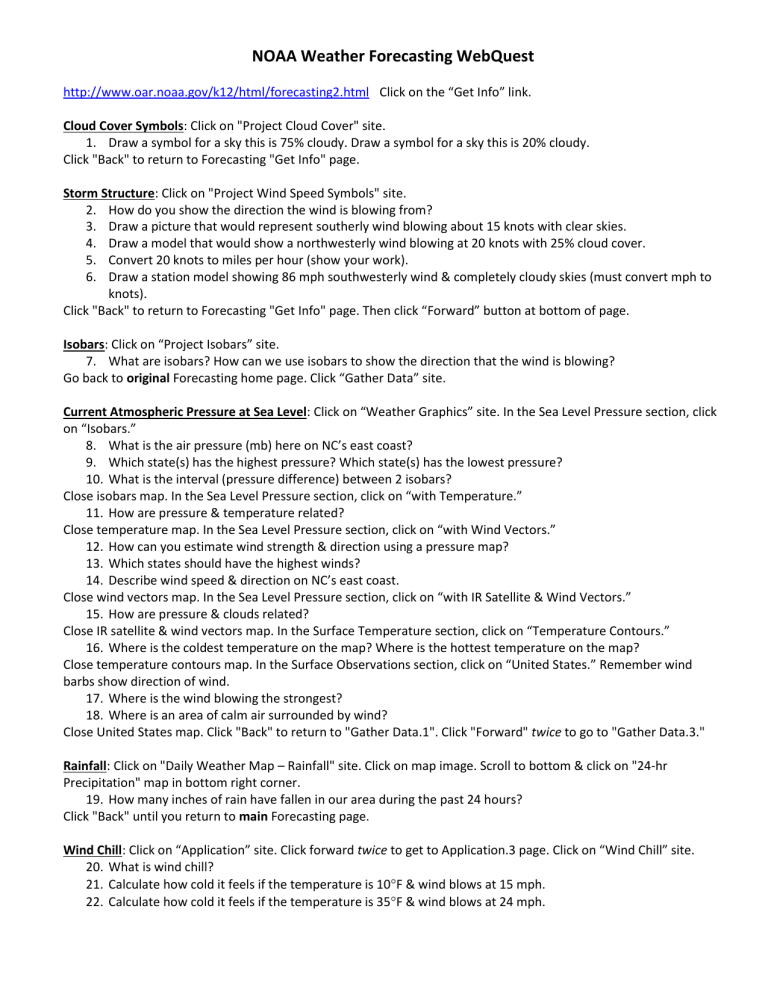
NOAA Weather Forecasting WebQuest
http://www.oar.noaa.gov/k12/html/forecasting2.html
Click on the “Get Info” link.
Cloud Cover Symbols: Click on "Project Cloud Cover" site.
1.
Draw a symbol for a sky this is 75% cloudy. Draw a symbol for a sky this is 20% cloudy.
Click "Back" to return to Forecasting "Get Info" page.
Storm Structure: Click on "Project Wind Speed Symbols" site.
2.
How do you show the direction the wind is blowing from?
3.
Draw a picture that would represent southerly wind blowing about 15 knots with clear skies.
4.
Draw a model that would show a northwesterly wind blowing at 20 knots with 25% cloud cover.
5.
Convert 20 knots to miles per hour (show your work).
6.
Draw a station model showing 86 mph southwesterly wind & completely cloudy skies (must convert mph to knots).
Click "Back" to return to Forecasting "Get Info" page. Then click “Forward” button at bottom of page.
Isobars: Click on “Project Isobars” site.
7.
What are isobars? How can we use isobars to show the direction that the wind is blowing?
Go back to original Forecasting home page. Click “Gather Data” site.
Current Atmospheric Pressure at Sea Level: Click on “Weather Graphics” site. In the Sea Level Pressure section, click on “Isobars.”
8.
What is the air pressure (mb) here on NC’s east coast?
9.
Which state(s) has the highest pressure? Which state(s) has the lowest pressure?
10.
What is the interval (pressure difference) between 2 isobars?
Close isobars map. In the Sea Level Pressure section, click on “with Temperature.”
11.
How are pressure & temperature related?
Close temperature map. In the Sea Level Pressure section, click on “with Wind Vectors.”
12.
How can you estimate wind strength & direction using a pressure map?
13.
Which states should have the highest winds?
14.
Describe wind speed & direction on NC’s east coast.
Close wind vectors map. In the Sea Level Pressure section, click on “with IR Satellite & Wind Vectors.”
15.
How are pressure & clouds related?
Close IR satellite & wind vectors map. In the Surface Temperature section, click on “Temperature Contours.”
16.
Where is the coldest temperature on the map? Where is the hottest temperature on the map?
Close temperature contours map. In the Surface Observations section, click on “United States.” Remember wind barbs show direction of wind.
17.
Where is the wind blowing the strongest?
18.
Where is an area of calm air surrounded by wind?
Close United States map. Click "Back" to return to "Gather Data.1". Click "Forward" twice to go to "Gather Data.3."
Rainfall: Click on "Daily Weather Map – Rainfall" site. Click on map image. Scroll to bottom & click on "24-hr
Precipitation" map in bottom right corner.
19.
How many inches of rain have fallen in our area during the past 24 hours?
Click "Back" until you return to main Forecasting page.
Wind Chill: Click on “Application” site. Click forward twice to get to Application.3 page. Click on “Wind Chill” site.
20.
What is wind chill?
21.
Calculate how cold it feels if the temperature is 10
22.
Calculate how cold it feels if the temperature is 35
F & wind blows at 15 mph.
F & wind blows at 24 mph.
